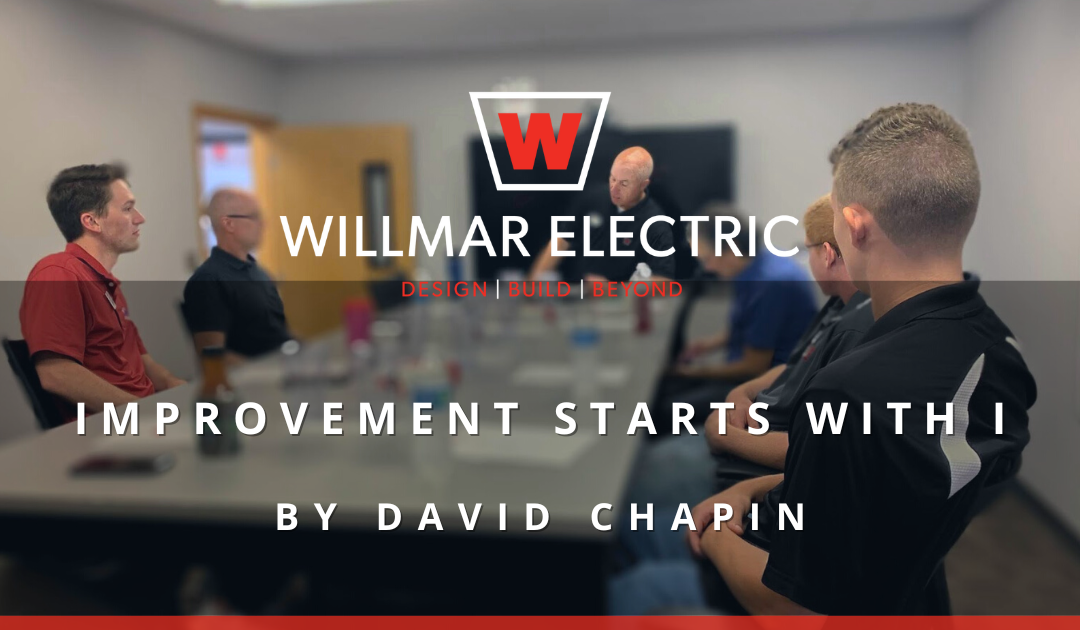We just finished going through a book study on “Improvement Starts with I” by Tom Hughes. (Click on the link for more information).
The book is based on five words that start with the letter “C.” The words are candor, commitment, coaching, consistency, and continuous learning.
The book is built on Paul Aker’s book “2 Second Lean.” Aker’s concept is that if you make minor improvements every day, you will significantly improve in the long run. The leadership of Willmar Electric committed to 2 Second Lean seven years ago, and we continue to push ourselves toward making our company leaner every day.
Every month, we invite people to our lean tours to hold us accountable to consistently improve ourselves in order to help those around us improve.
“Improvement Starts with I” challenges us to take lean to a new level. As Hughes points out in the book, “everyone wants everyone else to change.” That mindset won’t work. He says it is the fundamental reason why most of us fail to achieve progress. As a team, we need to empower others “to make significant changes” regardless of where we are on the organization chart.
One by one, the book goes through the 5 Cs.
Candor has four stages: stop, speak up, listen and act. Hughes says, “Creating a safe space for your organization to act his way is a big part of lean.” At Willmar Electric, we make this part of our brand promise when we tell people we will be approachable. Hughes challenges us to examine ourselves to either “change the people or change the people.” Doing so will help us eliminate organizational friction.
Commitment involves us as leaders being sheepdogs and setting an example. Leaders need to set a high standard and practice lean. We need to show our organization we to lean seriously by living it in our daily actions.
In coaching, Hughes pushes us to develop a learning club and have a lean cave where lean principles win the day. Hughes points out, “at the early stages, the improvements don’t matter; engaging people does.” We need to ensure we are spreading the credit for our successes. He tells us that if we are having trouble getting lean into place, the first place to look is in the mirror. We shouldn’t be saying no. We should be supporting, encouraging, and listening.
Then he introduces the concept of consistency to us by quoting E James Rohn “Successes is neither magical nor mysterious. Success is the natural consequence of consistently applying fundamentals.” Consistent routines lead to success. This section of the book outlines how a consistent morning huddle helps build culture and helps to grow people through education.
The book ends by telling us we can’t stop with candor, commitment, coaching, and consistency. We need to have continuous learning. Having strong written standard operating procedures (SOPs) is the final building block. Taiichi Ohno, the “Father of Lean,” said, “without standards, there can be no improvement.” If we fail to maintain our standards, we start down a path of lowering our quality. Quality is the firm foundation of every company that is successful in the long term.
It was an easy read, but putting the concepts into action is challenging because change is always difficult. I encourage you to read the book with a group of people. You have a much better chance at making change stick if you aren’t trying to move forward by yourself.

